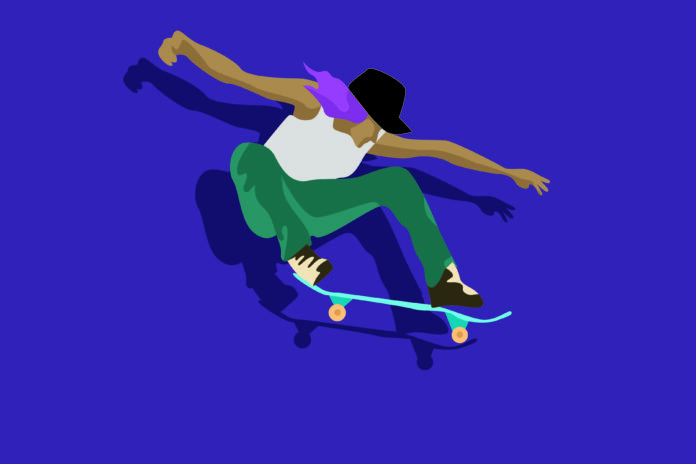An examination of skating in the present day
An estimated 5 percent of the US population, or 16 million people, engage in skateboarding on a regular basis. Invented in the late 1940s, skating did not begin to receive mainstream popularity until the mid 1990s and into the early 2000s. With pro skaters like Tony Hawk and Ryan Sheckler emerging as the sport’s biggest stars, a true “skating culture” began to take shape.
In 1995, the X Games were created in order to showcase alternate or extreme sports like BMX and skating, giving competitors the opportunity to win medals as well as prize money. For the first X Games, an impressive 200,000 people were said to have been in attendance. Along with those experimenting in the punk rock scene of the mid 90’s, skating and other sports became a way for teenagers to continue to reinvent who they were.
“Skate culture during the time was going through this phase where people could reinvent themselves and teach themselves something new,” said fourth-year environmental policy analysis and planning major Andres Gutierrez, who has been skating for 10 years. “Flip tricks were new to the scene, and there was no wrong way to skate, just as long as you had a board and could stand on it. Between the late 80’s and early 90’s, skate culture was moving from empty pools straight to the streets. Any outcast could belong as long as they had the drive to skate.”
From the formation of mid-90’s skate culture came a sport that had everyone wanting to learn how. With a skateboard only costing around $20, it was easy for people to experiment with a board under their feet. Pro skaters like Tony Hawk paved the way, as the sport’s popularity grew in skateparks as well as in the home.
Hawk has released nearly 20 skating-related video games, the first being Tony Hawk’s Pro Skater in 1999. The object of the game was simple: skate around and perform tricks to earn points, which could be used to unlock new gear. The release of his first four video games grossed around $4 million in revenue.
For Gutierrez, getting into skating took time, but ended up being nothing but fun.
“I got into skating by watching skate clips on tv and there was this local skate shop down the street from where I lived,” Gutierrez said. “Seeing the kids around my neighborhood skating got me excited to learn. I bought my first skateboard at a garage sale. I taught myself how to ride and after plenty of trial and error, I taught myself how to balance on board and began skating more often.”
Since its peak in the 90’s, skating as a sport has decreased in popularity, with skateboard sales dropping approximately 2 percent every year since 2007, according to Skate Review. In 2006, 70 percent of skaters were between 12 and 17 years old. In 2019, while the average age of skaters is 14, only 45 percent of skaters fall between the 12-17 age range. In 2017, the X Games received a record-low viewership of around 385,000, according to Sports Business Daily, which was 35 percent lower than that of the previous year’s games.
If you ask skaters today, however, many still believe that skating culture has not faded, which is why groups like the UC Davis longboard club — which Gutierrez is part of — try to bring people together who enjoy skating and want to share that culture with others.
“I think many skaters have gotten tired of skateboarding being so popular,” Hunter Pauker, a fifth year chemical engineering major, said. “Skateboarding has always been inherently counter culture. Those who really love skating still skate of course. I do agree that younger kids aren’t getting roped into like they used to. There’s a real rise of scooter kids, and you’ll see this if you go to any skate park. Skateboarding is hard on the body. I think younger kids are figuring this out.”
With the resurgence of films like Jonah Hill’s “Mid90s”, nostalgic stories that glorify the popular skate culture from over two decades ago are reaching a wide modern audience. While statistics show that skating has taken a dip since its heyday, skating culture has not completely faded and still has a presence not only in 2019, but in the future as well
“Skate culture is what you make of it, the type of people you go outside with and just cruise down the street with,” Gutierrez said. “To anyone who wants to get into skating, it’s okay to not know what you want to get into. You don’t have to a professional to start skating, we all start off eating it. Practice makes perfect. Even if you change your mind, its okay because there will always be a skate community who enjoys the style you choose.”
Written by: Ryan Bugsch — sports@theaggie.org





